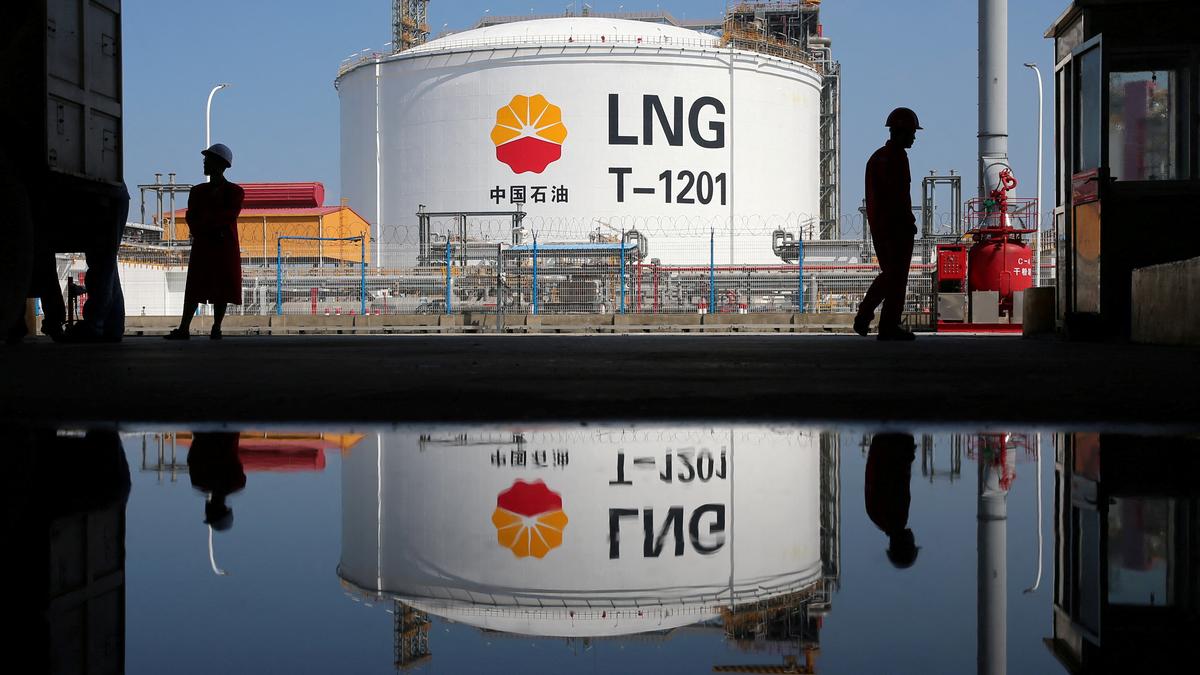India Gas Market Report: Outlook to 2030

- 17 Feb 2025
In News:
The International Energy Agency (IEA), in its report “India Gas Market Report: Outlook to 2030”, has highlighted the transformative potential of natural gas in India’s energy transition.
As India aims to raise the share of natural gas in its primary energy mix from ~6% to 15% by 2030, the report outlines a roadmap for achieving this goal through policy reforms, infrastructure expansion, and market liberalization.
Current Status and Future Outlook
- Demand Growth: India's natural gas consumption is projected to increase by 60%, reaching 103 billion cubic meters (bcm) by 2030. The City Gas Distribution (CGD) sector, which supplies gas to households, transport, and industries, will drive this growth.
- Domestic Production: India produced 35 bcm in 2023, with the Krishna-Godavari deepwater fields contributing a quarter. Production is expected to reach just under 38 bcm by 2030, a modest 8% increase.
- Import Dependency: With domestic supply growth lagging behind demand, LNG imports are expected to more than double, from ~30 bcm in 2023 to around 65 bcm by 2030. India is already the fourth-largest LNG importer globally.
Infrastructure Expansion
India’s natural gas infrastructure has undergone rapid growth:
- Since 2019, the number of CNG stations quadrupled and residential gas connections more than doubled.
- The gas transmission pipeline network expanded by 40%, with another 50% expansion expected by 2030.
- CGD infrastructure is poised for a further boom, supporting increased consumption in urban areas.
Sectoral Trends
- Industry: Heavy industry and manufacturing are expected to add 15 bcm to gas demand by 2030.
- Refining: Gas use in refineries will rise by over 4 bcm as more refineries get connected.
- Transport: Greater CNG adoption, if incentivized, could significantly reduce vehicular emissions.
Challenges Hindering Growth
- Price Distortion: Prices from legacy fields are capped (e.g., USD 6.5–10 per MMBtu), limiting true market-based discovery.
- Monopoly in Transport & Marketing: GAIL’s dominance in both gas marketing and pipeline ownership creates potential conflicts of interest.
- Storage Limitations: India lacks underground gas storage (UGS) and has limited LNG storage capacity, affecting supply security.
- Policy and Regulatory Gaps: Inadequate third-party access and fragmented pricing/taxation systems reduce investor confidence.
Policy Recommendations by IEA
- Gas Pricing Freedom:
- Implement full pricing freedom, in line with Kirit Parekh Committee (2022) recommendations.
- Initially lift ceilings on high-cost deepwater and ultra-deepwater projects.
- Allow producers to sell more output on platforms like the Indian Gas Exchange (IGX).
- Unbundling Supply and Transmission:
- Establish independent gas transmission system operators (TSOs).
- Legally separate marketing from pipeline operations to ensure fair, non-discriminatory access.
- Standardize Gas Sales Agreements (GSAs) and Gas Transmission Agreements (GTAs).
- Infrastructure and Market Development:
- Ensure transparent, regulated third-party access to pipelines.
- Develop strategic gas reserves and expand LNG terminal capacity.
- Improve data transparency on pipeline capacities and tariffs.
- Tax and Regulatory Reforms:
- Harmonize taxes across fuels to create a level playing field.
- Rationalize GST on CNG vehicles and revise import duties on natural gas.
- Offer tax benefits to natural gas similar to electric vehicles to promote adoption.
- Secure Long-Term LNG Contracts:
- With legacy contracts expiring post-2028, proactive procurement is essential to avoid spot market volatility.
